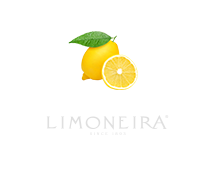IBD, or inflammatory bowel disease, is a painful condition that affects many adults as well as children. It affects up to 6.8 million patients all over the world by recent estimates, and the US has the highest rate of occurrence according to adjusted data.
It’s a condition that also has a number of related risks. There is no permanent cure, and so there is an emphasis on management. Dietary fiber is one of the key elements of managing IBD with food, and there’s a lot of misinformation about it online.
Here’s a look at two recent studies that examine that issue.
Dietary Fiber
A 2022 review by researchers at the University of Kansas Medical Center looked at the different types of dietary fibers. Health Benefits of Dietary Fiber for the Management of Inflammatory Bowel Disease was published in the journal Biomedicines.
Dietary fibers, in essence, are indigestible carbs that can be found in plants. They incorporate a variety of compounds that make them resistant to digestion by the enzymes in the human digestive tract. That’s what makes them important. Consuming fiber regularly restructures your digestive system.
In terms of foods, they are found in:
- oats, barley, nuts, seeds, beans, lentils, psylllium husk, flax seed, chia seeds, citrus and other fruits
Soluble fibers are easily fermentable, which means that bacteria can easily break them down, producing the byproducts and metabolites which benefit the body. This affects the microbes in the gut directly. Some fibers form a gel which reduces the body’s absorption of things like cholesterol and sugar, along with nutrients.
Soluble dietary fibers include:
- pectin
- B-glucans
- Hydrocolloids
- mucilages
- oligosaccharides
Insoluble fibers, in contrast, cannot retain water. They stay intact in the gut for a longer period of time, and are therefore less fermentable. They can help with bowel regularity where there is normal bowel function by bulking up the food that is digested.
Insoluble fibers include:
- Cellulose
- Hemixcellulose
- Lignin
The body reacts differently to each type, as another study seems to indicate.
Soluble vs Insoluble Fibers
A 2021 study published in the journal Frontiers in Pediatrics by researchers at the University of Alberta in Edmonton, Canada looked at the varying responses to the different types of fibers in children.
Their paper, Not All Fibers Are Born Equal; Variable Response to Dietary Fiber Subtypes in IBD, suggests that insoluble fibers may be problematic for IBD patients. It’s of particular importance because the incidence of IBD among children rising.
- The gut microbiome emerges as a key factor among other known risks;
- IBD is characterized by reduced biodiversity of gut microbes;
- The microbiota is also changed by the disease.
The exact nature of it is not known, but it’s clear there is a relationship between the disease and the bacteria found in our gut. Soluble fibers are more easily digested, and therefore don’t tend to make IBD worse, while imparting benefits to gut microbiota. Insoluble fibers, on the other hand, seem to stay in the gut too long, and can become problematic, even leading to pro-inflammatory conditions.
They note that pectin, in particular, a soluble polysaccharide that can be found in the cell walls of citrus and other fruits and vegetables, is used by a wide range of beneficial (anti-inflammatory) microorganisms as it ferments in the colon.
- It dampens pro-inflammatory responses;
- It reduces the production of pro-inflammatory enzymes;
- Studies on mice found that a diet high in pectin from oranges improved management of the disease.
One of the theories they posit is the incomplete fermentation of fibers, due to reduced microbiome, is part of the pro-inflammatory disease process. Since the responses they reviewed were so varied, however, they suggest that patient-specific treatments, based on an analysis of microorganisms in the gut, is a path to future treatment options.
Along with pectins, the researchers note that arabinoxylans, β-glucans, and β-fructans, all found in fruits, vegetables, and grains, are valuable sources of the compounds that feed beneficial microbes.
As the study’s authors note:
So what is the easiest means of increasing consumption of these dietary fibers while limiting insoluble fiber consumption? Food products such as bananas and broccolis, nuts, tomatoes, and carrots, mushrooms, and peeled apples and citrus fruits contain high levels of soluble dietary fibers while limiting insoluble fiber intake.



